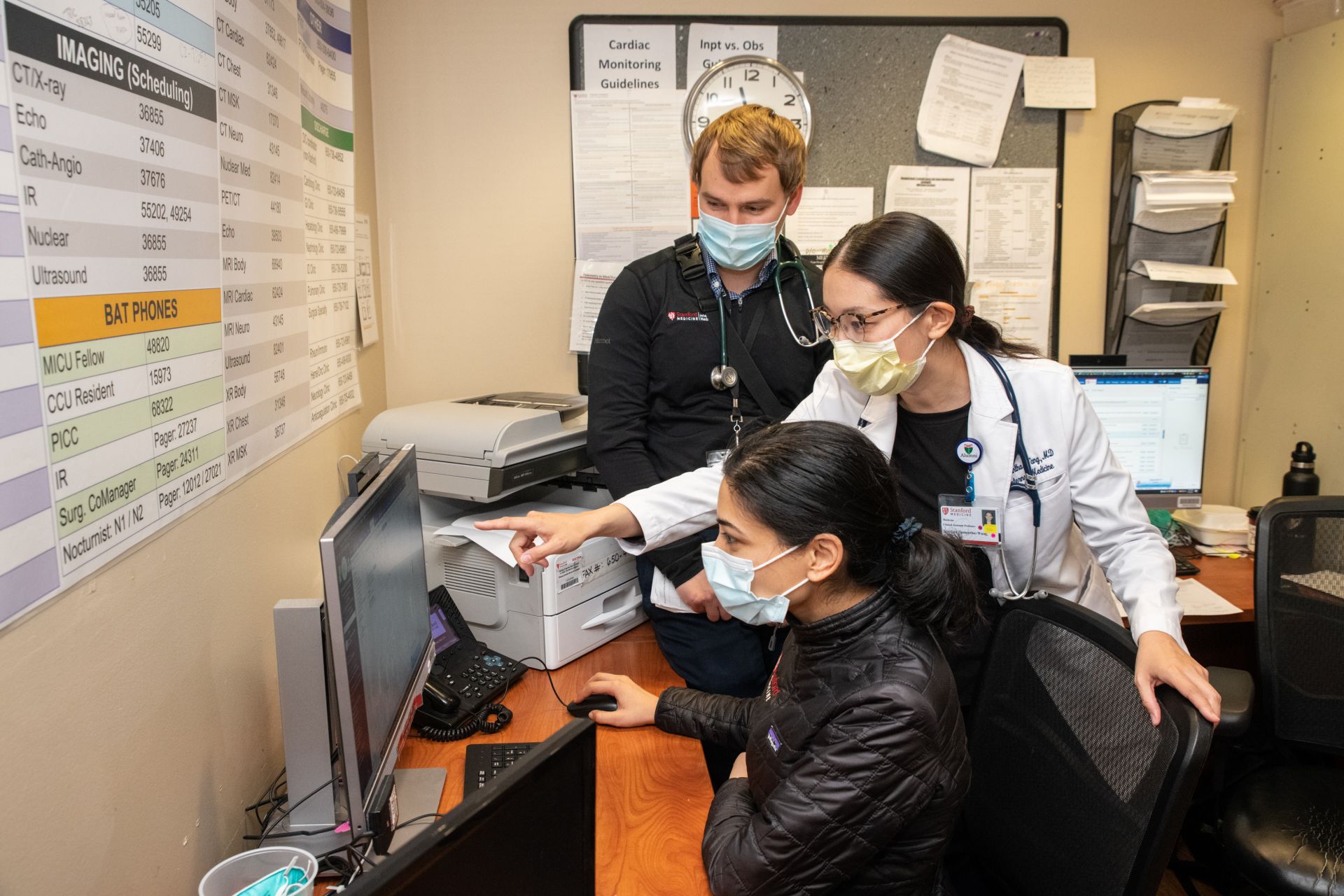COVID-19 Modeling Team at Forefront of Pandemic Projections and Planning

COVID-19 Modeling Team at Forefront of Pandemic Projections and Planning
Edna Idan, MD
Passionate about serving the underserved
“The people I met at Stanford embodied the phrase ‘anything is possible’—a concept I learned from my parents”
Sara Tesfatsion, MD
Confident that she can contribute
“The fact that someone could recognize my potential and future contribution to the field of medicine was encouraging”

Samantha Wang, MD (center) is the leader of the 5-Minute Moment for Racial Justice program, designed to promote racial justice and health equity during interactions with patients. Residents Thomas Savage, MD (left) and Jaspreet Pannu, MD (right) worked with Dr. Wang on the program
1 Context
Does skin color have an impact on a finding such as a skin mole?
2 Current Standards
How do we currently evaluate skin findings in people with dark skin, and what are the limitations? Most medical textbooks feature light-colored skin when discussing skin conditions.
3 Historical Narrative
Describes a prominent scenario from the history of medicine, where a skin finding on a dark-skinned person was mistakenly dismissed as benign but later determined to have been a lethal form of cancer.
4 Disparities
Why is the five-year survival rate for skin cancer 67% for Black people but over 90% for white people?
5 Steps to Equity
Highlight novel reference materials to understand how various conditions manifest on dark skin. Examples in this case might include BrownSkinMatters.com or the textbook Dermatology of Pigmented Skin, by Elinor A. Graham, MD, MPH.
“Our goal is to identify specific communication strategies
and practices that clinicians can use to address racism
that affects their patients’ health and well-being”
“Our goal is to identify specific communication strategies
and practices that clinicians can use to address racism
that affects their patients’ health and well-being”
1 Prepare with Intention
Consider how your identity could influence how you perceive your patient and how your patient might perceive you.
2 Listen intently and completely
Listen for your patient’s experiences with racism, bias, or mistreatment.
3 Agree on what matters most
When creating a shared agenda with your patient, check yourself for biases that might influence what you prioritize for the visit
4 Connect with the patient’s story
As you listen to your patient’s story, consider how anti-Black racism has influenced your patient’s experiences with his or her health and health care.
5 Explore emotional cues
Consider how racism trauma might influence your patient’s emotions.
